Kitchen Science Experiments - Fizzing Rainbow Stars
This is the first in a series of Kitchen Science Experiments and Kids STEAM activities. This particular kitchen science experiment - Fizzing Rainbow Stars is a great sensory activity for kids, incorporates lots of Science learning for older kids and is very easy to set up.
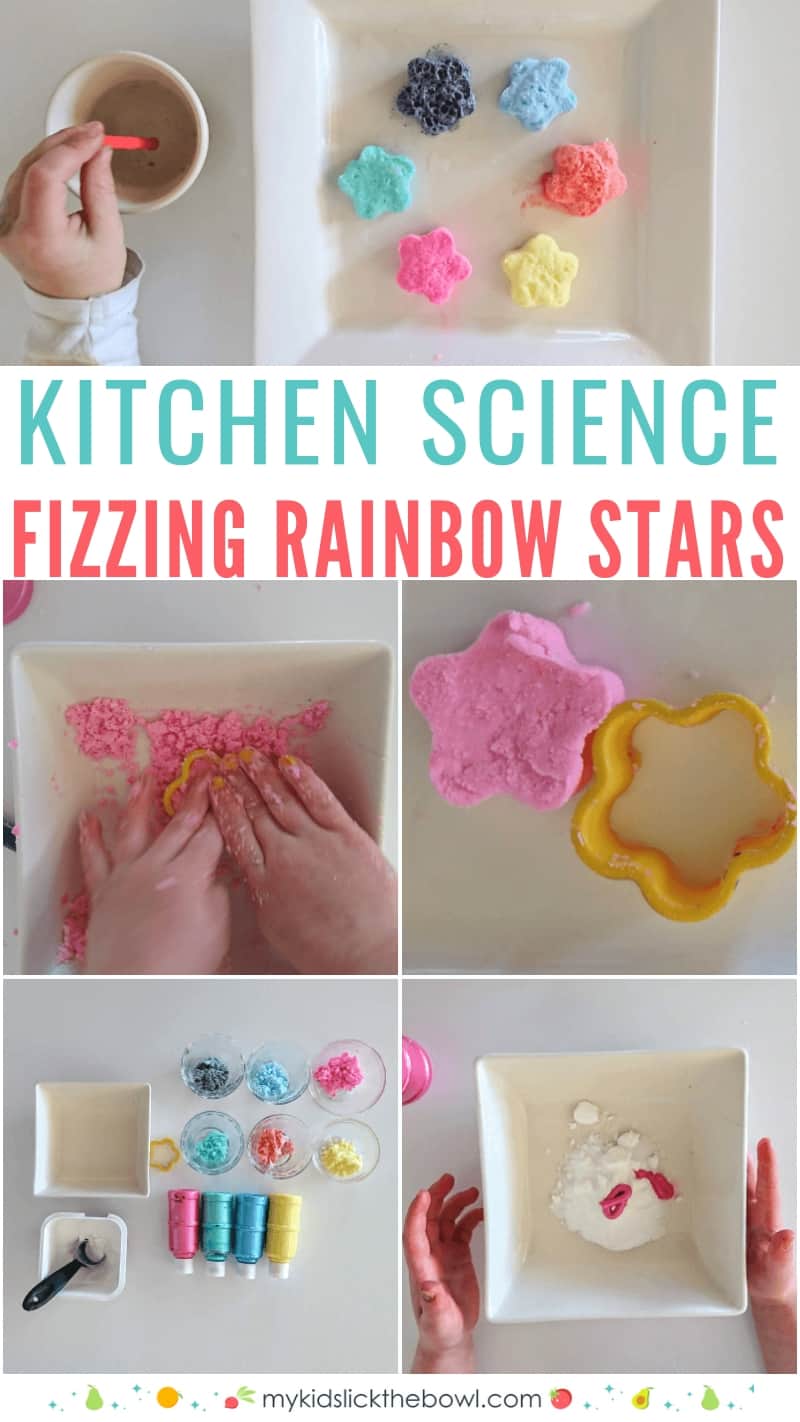
I'm so very excited to introduce the first in our new series of kitchen STEAM activities for kids. For those of you who aren’t familiar STEAM education is an approach to learning that uses Science, Technology, Engineering, the Arts and Math that is aimed at providing children with opportunities to learn about, question, problem solve and think creatively about ‘real world’ challenges that are relevant to their lives.
As this website is inherently a kid food blog the majority of the STEAM activities in this series will have a kitchen science bent. ie they will be mainly based on ingredients you can find in the kitchen. A slightly different way to get kids involved in the kitchen compared to traditional cooking and baking with kids,
The first STEAM activity we’re bringing to you, we think, is a perfect mix of all the aspects of STEAM learning for kids of all ages, even toddler ages kids too. So let’s get started.
Kitchen Science Experiments- Fizzing Rainbow Stars Materials
- Baking Soda
- Coloring, this could be food dye or paints
- White Vinegar
- Droppers or Straws
- Lots of containers
- Small cookie or play dough cutters
Fizzing Rainbow Stars Instructions
Making the rainbow stars is so easy, the children will be able to this themselves. Younger preschoolers will need some assistance; but otherwise this a great hands on experience that can introduce the idea of mixing.
- We placed 3 tablespoon of baking soda into a bowl along with a few drops of color. You may need to adjust the amount of baking soda depending on your cookie cutter size, but we recommend using a small cutter; otherwise you will go through a lot of baking soda! Kids can then set to work using their hands to mix the coloring into the baking soda. Repeat with other colors.
- Next it’s a simple case of filling the cutter with the baking soda, pressing it down and compacting it. It needs to be really squashed down so that it will hold its shape. Younger kids will most likely need help with this as with gently pressing it out of the cutter. Older kids however, can be set this as a challenge.
- Once all the baking soda shapes have been pressed out onto a dish, the fizzing fun part can really begin. Provide a small container of near white vinegar and a dropper. Allow kids to drop the vinegar onto the baking soda and watch the fizzing reaction that takes place. Bubbles indicate that a gas is being produced, something you can discuss with older kids. In fact, the gas in this case is Carbon Dioxide; again something that could be researched with kids who are able.
Fizzing Rainbow Stars Video
If you don’t have a dropper, a cut off straw can serve a similar purpose, but will not pick up as much vinegar. If using the straw technique, you place one end of the straw into the vinegar, then squeeze the other end closed between your finger and thumb, lift the straw out and drop the vinegar onto the baking soda shape by opening the straw again. This is a great technique for older kids to challenge themselves with, figuring out different methods that will allow for more vinegar to be collected using the straw method; for example a deeper container of vinegar will travel further up the straw.
Kitchen Science Experiments- What happens when you add vinegar and baking soda
Vinegar a common kitchen cupboard staple is dilute acetic acid, and baking soda also an everyday ingredient is sodium bicarbonate. When you mix the two you create carbon dioxide gas. It's the bubbles of carbon dioxide gas that makes the fizzing
In this kitchen science experiment the combination of a liquid (vinegar) and a solid (baking soda) creates a gas carbon dioxide
If you are ready to bring some math into this activity, younger children could be asked to count the number of drops added, or the volume of vinegar needed to completely dissolve one of the shapes. A timer could be used to time how long the fizzing lasts for each time a dropper of vinegar is added; but remember to discuss how keeping the volume of vinegar added each time, in this case, must stay the same so that the results are valid.
The reaction will continue to take place until all the baking soda has been reacted and the shapes appear to dissolve, creating a rainbow-coloured mixture on the dish. This can be mixed with the end of the straw or dropper to create swirling patterns and bring some of the Arts into this kitchen STEAM activity.
We hope you enjoy this fizzing STEAM kitchen science activity and can’t wait to share our next lesson in the series.
6bc83c51e9b3f0770d3146e05414074ffeb59befc66855cd9b

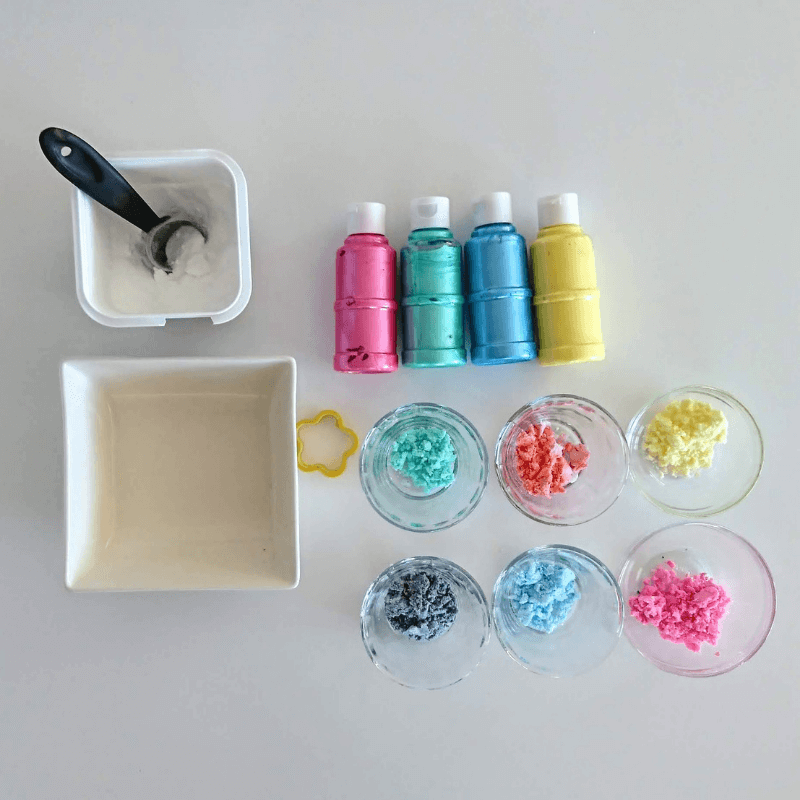
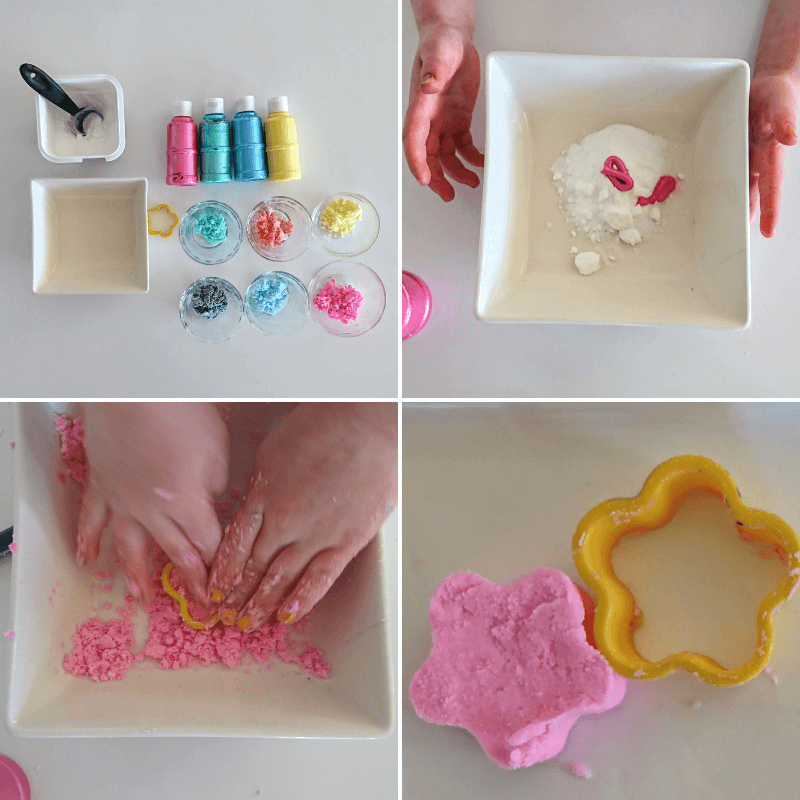
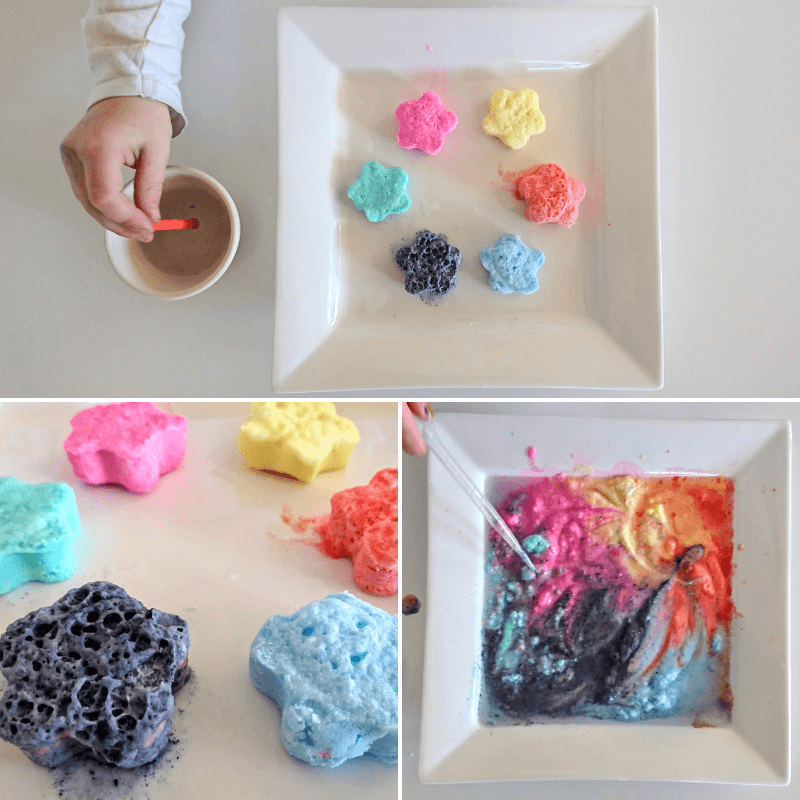
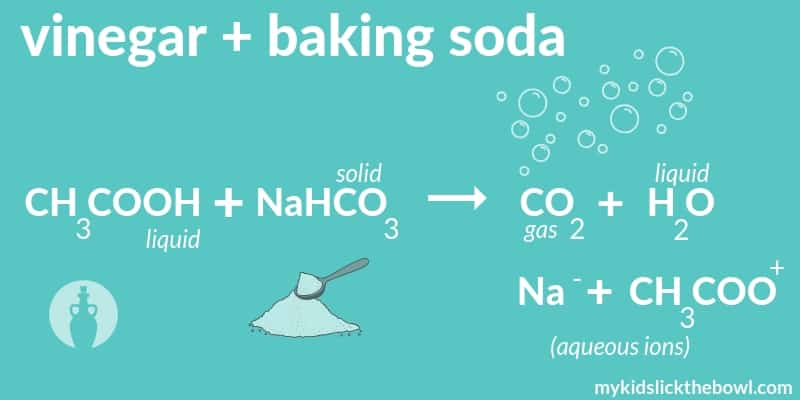
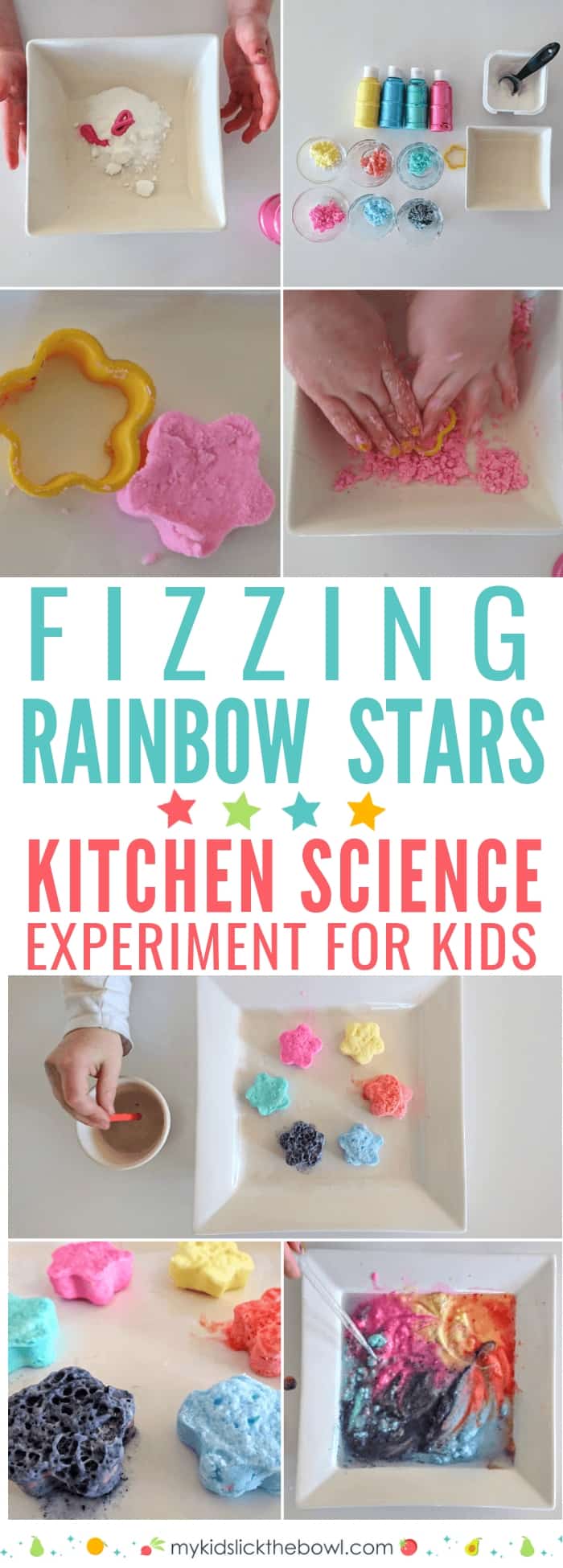
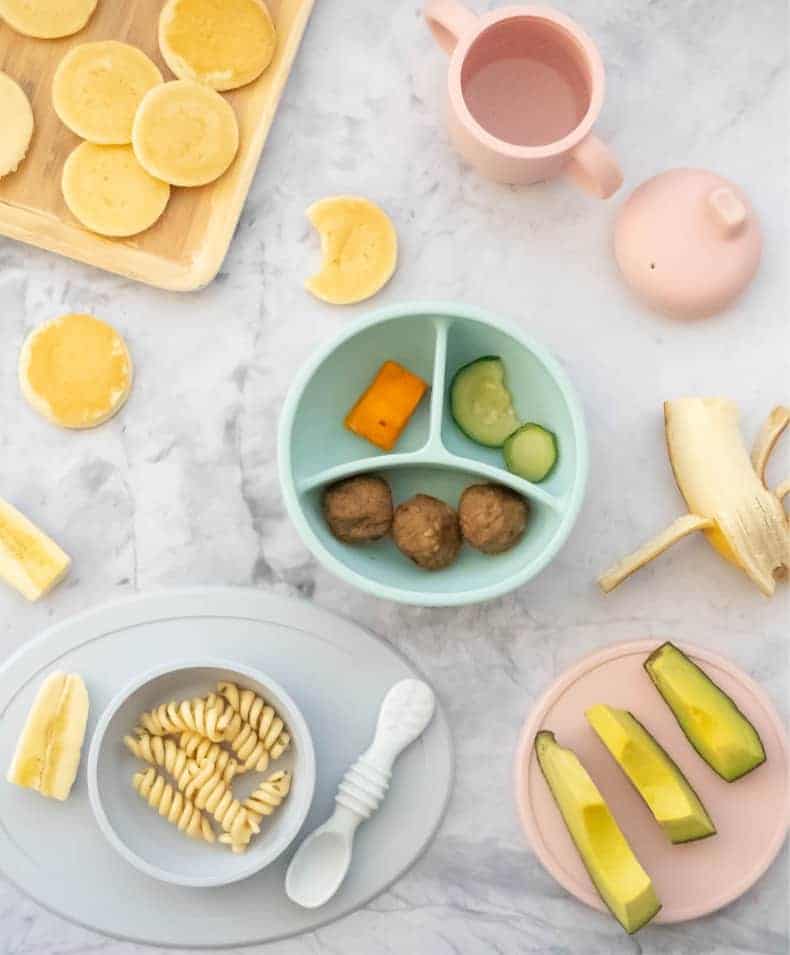
Where is the print button?
Hi sorry, there isn't one on this post, it only seems to work on my 'recipes' I'm working on it though